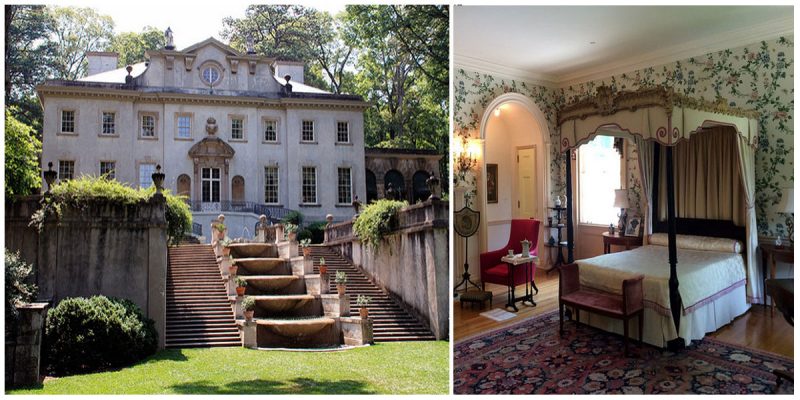The Swan House is known as one of the most recognized and photographed landmarks in Atlanta and it is an amazing example of the Neo-Renaissance Revival style popular in the 19th century.
It was built in 1928 for the Edward H. Inman family in Atlanta, Georgia. Designed by the architect, Philip Trammell Shutze and decorated by Ruby Ross Woods of New York, the house provides a glimpse into the lifestyle of the Inman family during the 1920s and 1930s.
The Inman’s first house in Ansley Park burnt down in 1924 and so they started to build this new home on 28 acres in Buckhead. The name of the house is drawn from the swan motifs that can be seen on many of the interior rooms.
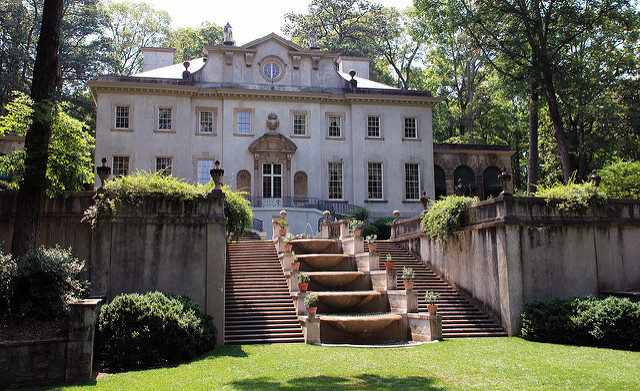
There are five rooms of distinction in the house: The Morning Room, the Dining Room, the entrance vestibule, the library and the entrance hall. Both the rooms and the exterior facades are beautifully elaborated.
The design is a combination of Classical and Renaissance Revival styles, and its main entrance, which is the east facade of the house, has a four-columned portico, giving the house a grandiose look. The west facade is the rear of the house and said to be the most impressive of the two.
It is sited at the top of a small hill with steps on either side of a cascade falling down to terraced gardens.
This house is considered to be Shutze’s finest residential work in which he successfully adapted the Italian and English classical architectural styles.
When Edward Inman died in 1931, his wife continued to live in the house until 1965. In 1966, the whole site was purchased by the Atlanta Historical Society.
The house is 1920s and 1930s historic house museum and there are many of the Inman’s original furnishings, which range from 18th -century antiques to 20th-century objects. Today, the mansion is operated as part of the Atlanta History Center.
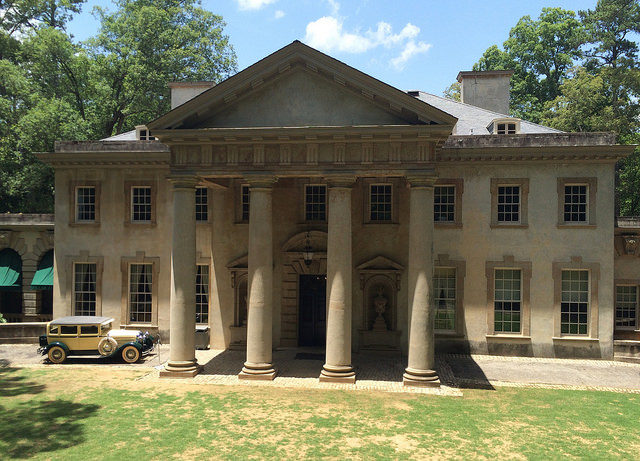

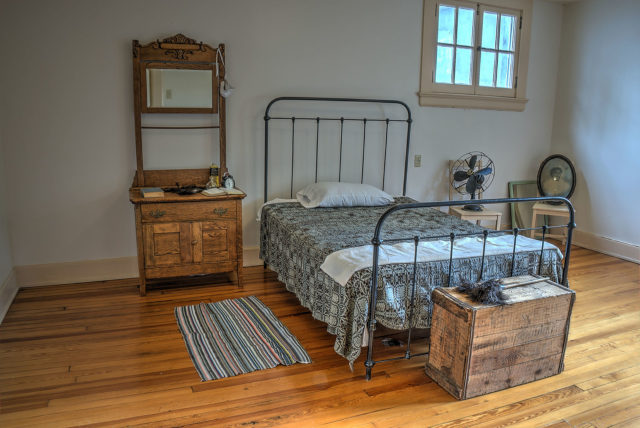
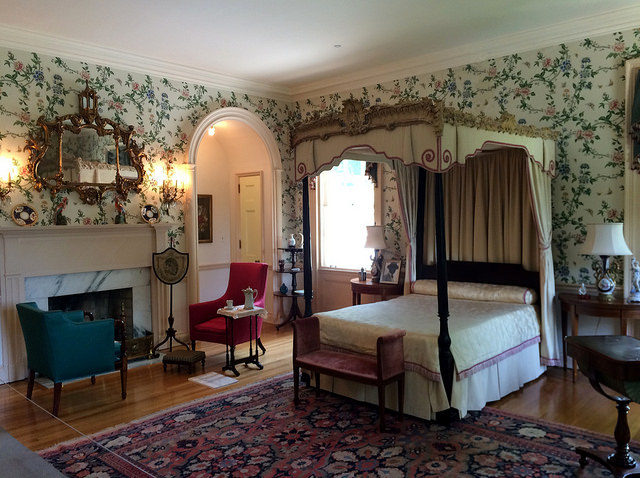
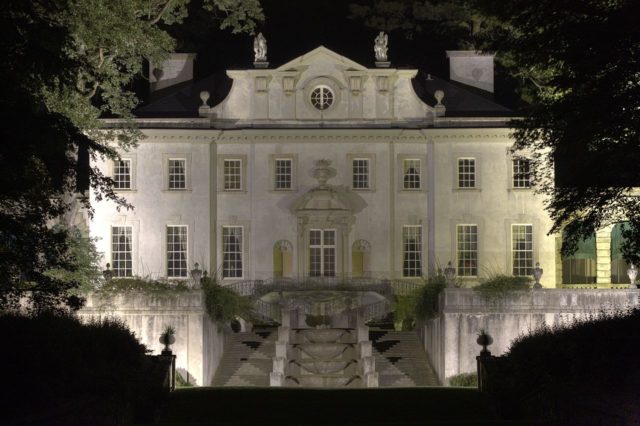
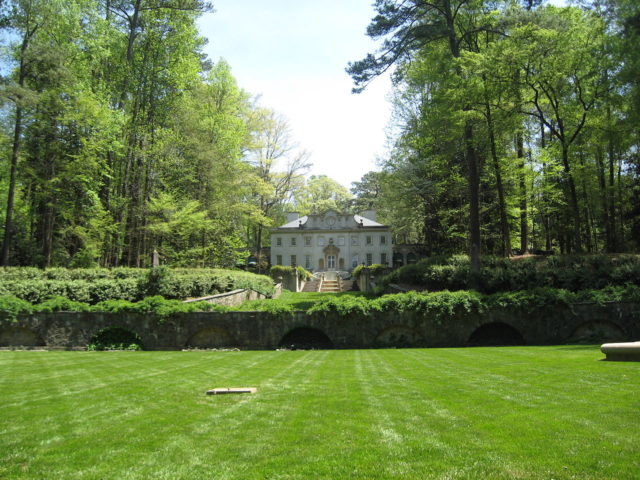
The Swan House is also known as one of many Georgia set locations used during the filming of the movie The Hunger Games: Catching Fire, and in The Hunger Games: Mockingjay Part 2.
After the making of the movies, people were able to go on guided tours of the house, showcasing the rooms that were used during filming. Also, it appears in the opening sequence in the movie Little Darlings, from 1980 and as a finish line of the 19th season of The Amazing Race.
